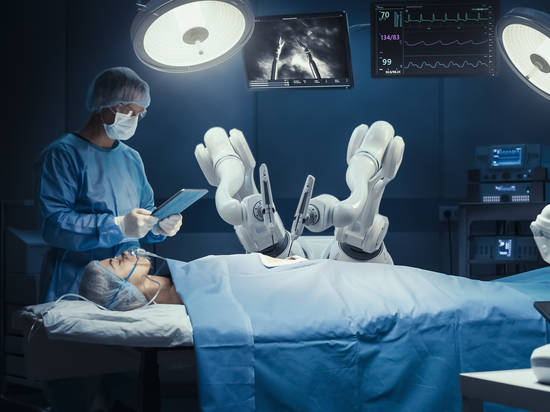
#Industry News
A Comprehensive Guide to Operating Systems for Healthcare Professionals
The operating system is the heart and brain of any medical computer, making it critical to understand how they work.
The term "operating system" should be familiar to anyone who uses computers, even in a casual sense. If you've ever opened a file or installed a new program, you've interacted with your computer's OS.
But what about the world of healthcare? As we’ve frequently explored, the healthcare sector imposes unique challenges on a computer’s software and hardware. A computer’s OS is no different in this regard, and today, we’ll look at some of the most popular operating systems and why they are (or aren’t!) used in the healthcare sector.
What is an Operating System, and What Does It Do?
The purpose of the operating system is to give the user an interface for using the computer's hardware and software. Tasks managed by an OS include:
Booting: Turning your device on, powering the system, and activating the necessary programs.
User interface: The user interface allows them to enter and receive information to and from their computer. For example, you interact with the user interface when you click on a program’s icon on your desktop to launch it.
Loading and executing programs: The OS is in charge of loading programs the user wishes to use, whether a video game, a word processor, or to bring up an EMR.
Managing memory: When programs are running, the operating system will allocate resources from the computer’s CPU and memory to allow them to function correctly.
Data security: An OS should include cybersecurity features like firewalls and antivirus programs that protect the computer.
Disk management: Operating systems allocate space for programs to the computer’s storage, such as hard drives and solid-state drives.
Controlling peripheral devices: A computer’s OS will allow the user to control other devices, such as cameras, printers, flash drives, and more.
The Most Popular Operating Systems and Their Use In Healthcare
Every computer device, from desktop PCs to smartphones, has an operating system of some sort. The three most popular OS's for computers today are:
Microsoft Windows
The undisputed most popular operating system since 1985, Microsoft Windows has gone through numerous iterations and is available for both consumers and businesses alike.
Windows, also known as WinOS, is widely used in the broader computer market as well as healthcare due to its user-friendly interface and ease of implementation. Developing new programs and applications for WinOS is also relatively easy, making it attractive for software developers.
Most medical computers come with Windows as standard, as it is the operating system most healthcare providers are already familiar with. Sometimes, a medical computer will use Windows as the user interface while another operating system manages loading and running programs. In such scenarios, that second OS is usually…
Linux
As a family of open-source systems rather than proprietary software, anyone can modify, use, and distribute a Linux-based program. This makes it extremely popular among computer coders and programmers, and many industries (healthcare included) use Linux to develop programs or run embedded systems.
Linux OS comes with no licensing fees, making it cheap to use, and it can be customized to meet healthcare regulations such as IEC 62304 and FDA requirements. Numerous medical devices rely on it; many EMRs are designed to run on the operating system.
macOS
As the proprietary OS developed by Apple, macOs isn't meant to be tweaked or modified by end-users. It has also gone through several iterations over the years, with the most recent being macOS Sonoma.
While macOS has a dedicated user base, it is less widespread than Windows due to its lack of compatibility with various hardware and software options. While a Windows-based PC can be customized with multiple CPUs, memory, and graphics processors, Apple products could be more flexible. This means that healthcare companies have much less incentive to develop programs or tools for macOS.
Another reason why medical devices rarely use macOS is because of Apple's "walled garden" approach to design, which makes it extremely difficult for third-party developers to make their devices compatible with Apple's products.
Closing Thoughts
The right choice in operating systems is just as critical as selecting a computer’s CPU or screen size. Your selection will need to support the full range of devices, software, and equipment your hospital or clinic relies on. In such instances, investing in a medical computer or tablet running multiple operating systems can answer that requirement perfectly.





